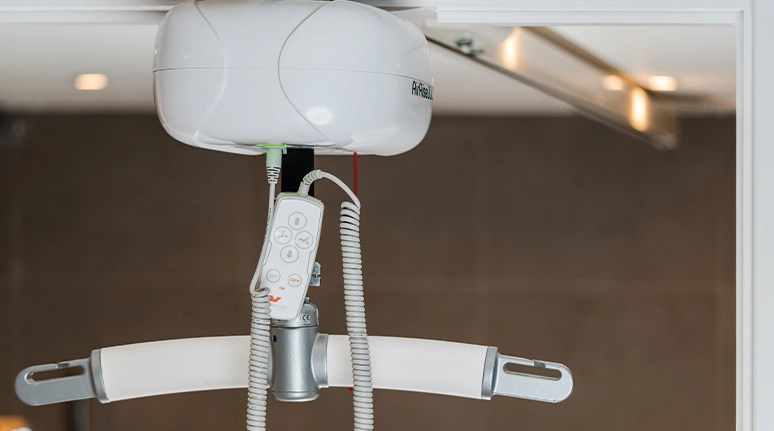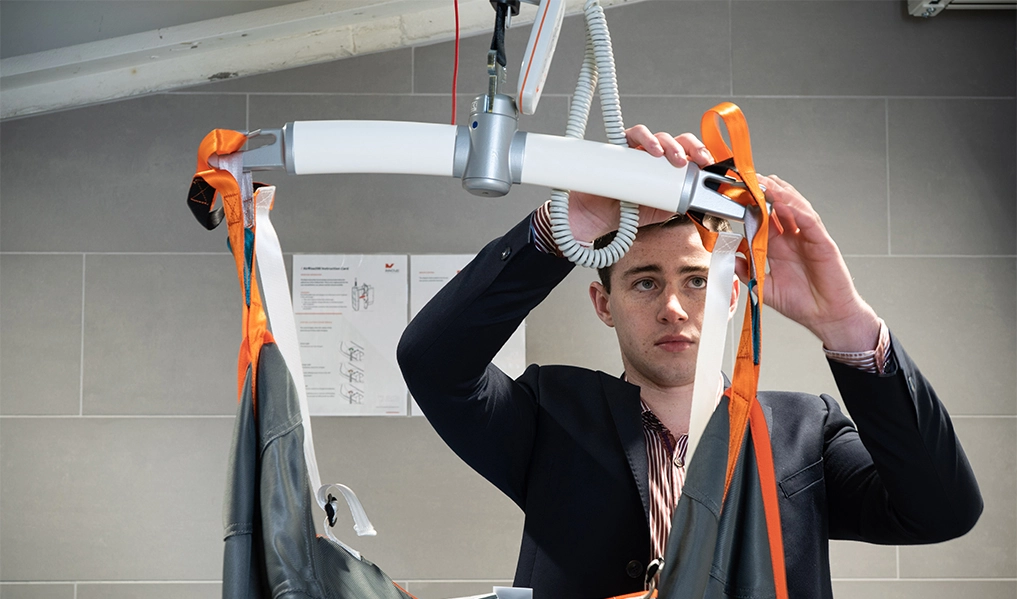How to tell if someone needs hoisting
Posted on 7 March 2019 By Aaron Stretton

In This Article
Whether or not you should hoist a patient is an important decision when you’re coming up with a care plan.…
Whether or not you should hoist a patient is an important decision when you’re coming up with a care plan. Depending on how much the patient can do already, you might not even need to use an overhead hoist system.
Here are some things you can check before you decide to hoist a patient.
Jump Straight To –

Deciding if you should hoist a patient
Before you start, you need to decide whether or not you should hoist a patient in the first place. The person’s fitness and general medical condition need to be looked at very closely before you undertake any sort of moving and handling.
For instance, if the patient has fragile skin or any pressure sores, you could end up aggravating the condition by hoisting them. There may be another less harmful way of moving the patient without causing them any further injuries.
The patient’s cognitive state should also be considered before you look at hoisting them. The whole process of being hoisted (as well as the motion of being moved whilst in a sling) can be rather confusing and distressing for some patients.
If using an overhead hoist will cause more distress to the person, then it might cause more harm than good.
Another thing you need to bear in mind is the patient’s weight and whether the overhead hoist system you have can accommodate it. Particularly with bariatric patients, you need to make sure that the hoist can lift the right weight.
Some hoists can lift up to 500kg, so always check you’ve got the right equipment before you try hoisting a patient.
How dependent is the patient?
One key thing that will help you decide if a patient needs hoisting is by assessing how dependent they are on carers to remain mobile. You can score the patient on a scale of 1-7 to help determine this.
If the patient gets a score of one or two, then they need hoisting.
Some other questions you may want to ask in your assessment are:
- Can the patient support their own weight?
- Do they stay balanced when sat down and position their feet on the floor directly under their knees?
- Is the patient able to hold handles comfortably and use their arms and legs to help come to a standing position?
- Can they move without —
- leaning significantly to one side;
- pain in their shoulders, back, or knees;
- unpredictable movement;
- muscle spasms?
If you answer no to any of these questions, then the patient needs hoisting.
Summary
This should give you a good overview of how to determine if you should hoist a patient. Use the above scoring method and questions to get a good idea of just how capable the person is and always make sure that they are comfortable and fit for hoisting in the first place.
Speak to The Experts
Need assistance with product enquiries, general inquiries, or product support? Our Phonelines are open 9am - 5pm Monday to Friday
0113 519 0319
Or, fill out the form for a call back.
